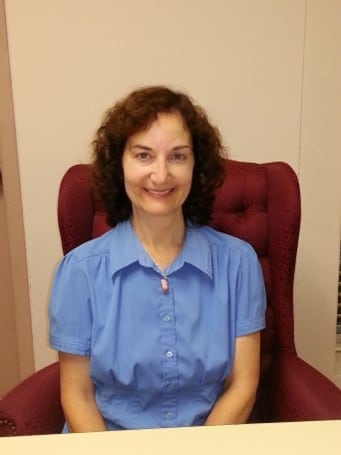What is Dissociation?
Dissociation runs on a continuum from road hypnosis, daydreaming and losing yourself in a good book to Complex Post Traumatic Stress Disorder and then to the extreme of Dissociative Identity Disorder.
The experience is normal when you are lost in something you enjoy or bored on a long drive and suddenly arrive at your destination with no idea how you got there. The mind, emotions, and body are not in the same place at the same time. In trauma, it can be the “freeze” in fight, flight, freeze.
It is normal for children to dissociate and when faced with severe trauma they have to escape somehow, so they go away mentally and emotionally to protect themselves.
What Does the Experience of Trauma Dissociation Feel Like?
Note: The following poem is copyright protected:
Dissociation
Through the window
out the door,
round and round the ceiling,
never falling off the floor
seldom truly feeling.
Living with dissociation is like stepping through the Looking Glass. Time, space, memory, and sense of self become distorted. What is real? What is not?
Trauma that happens when a child is dissociated can cause memories that feel like dreams. As an adult you may feel like you are out of your body watching yourself. Or, as though you are acting in a dream. Things seem unreal.
A person with alters may watch themselves say or do something they have no control over which can be very disconcerting. People may tell them things that they said or did that they deny because they actually lost time.
How Dissociation Works in CPTSD and D.I.D.
The act of dissociating is a coping skill to prevent a child from going crazy or dying. Unfortunately, when a child with severe developmental trauma continues to rely on this coping skill as an adult it can cause problems. It initially helps with survival and can give an adult a much-needed break from stress so that they can function. When used exclusively though it can interfere with having a normal life.
Not being aware of what is happening in your feelings or in your body can protect against triggers but it limits the person’s experience. It can also cause problems in jobs and relationships because the person isn’t fully present.
How Can You Heal and Move Forward?
The only way out is through. Moving forward to heal further involves being brave enough to look inside yourself. Coping skills will only get you so far and may act as a band-aid unless you work on healing. Starting an internal dialogue, possibly through journaling can be a step toward inner communication.
Questions to ask yourself can be: What do I need? What do I feel? What do I want? How can I start trusting myself and listen to the answers?
It can be very hard for survivors to look inside and be honest enough to reconnect. The whole idea of dissociation is to disconnect from pain and fear. This is where coping skills can help so that you can decide how much work to do at one time, where and when.
Learning to stop dissociating and deal with reality is much like learning to cope without addictions. It can be very scary and difficult but worth the effort. It is essential to have supports in this and to be your own best friend and advocate.
A Few Skills That Can Help:
A. Grounding: Sit down and press your feet on the floor, hands on your knees, breathe deeply and slowly and look around. Ask yourself 5 things you see, hear, and can touch. Also ask yourself what you see that couldn’t possibly have been there when the trauma happened. This can reorient you.
B. Choosing a quiet time and safe space to journal: If you have alters possibly ask the Little Ones if they want to decorate a journal and of course any part can help. You might want to have separate notebooks for each where they can communicate with you and each other. If you don’t have alters, one journal may be enough unless you also want to have a separate journal for your inner child.
C. Containment: You can use visualization to do this activity. Note: People who dissociate tend to be very good at visualization. Visualize a box or trunk or whatever you like so that you can put the memories or feelings in it until you can deal with it. You may want to lock it and put it somewhere safe inside yourself. You can also use a real box like a shoebox, decorate it and write or draw what is bothering you. Then put it in the box and set it aside until you are ready to work on it.
D. If you have alters, ask an older part or a getting on with life part to come out.
E. Safe room or safe house: This can be very helpful for a person with alters but also works for people who dissociate but don’t have alters. Write in detail a description of a safe room (for D.I.D. a safe house with separate rooms for each). Be sure to write as many details as possible so that it seems real. Will it have doors, windows, curtains, angels, animals, food? What colors will it be? How big or small? Will there be toys, music etc. You are only limited by your imagination. You can then practice going inside for brief periods to find respite. The more that you learn to control the dissociation, the less you will have to rely on it.
A Word of Hope:
Holistically we heal top to bottom, inside to out, newer things heal more quickly and older things take longer. Sometimes too things come back for healing on a deeper level.
Like a spiral staircase, you are always up a level.
Sometimes on the healing journey, people feel stuck and afraid that the pain will never end. But, remember the spiral staircase. Feeling like you are back at the beginning is part of the process. You’re never back at the beginning. Trying to love yourself through it and giving yourself credit for what you do, can make all the difference!
Thank you for taking the time to read this article.
Susan Pollard, MS
https://www.facebook.com/susanpollardlifecoach [email protected]
Photo by Joeyy Lee on Unsplash
Guest Post Disclaimer: Any and all information shared in this guest blog post is intended for educational and informational purposes only. Nothing in this blog post, nor any content on CPTSDfoundation.org, is a supplement for or supersedes the relationship and direction of your medical or mental health providers. Thoughts, ideas, or opinions expressed by the writer of this guest blog post do not necessarily reflect those of CPTSD Foundation. For more information, see our Privacy Policy and Full Disclaimer.






I believe this blog simplifies the situation so that it is easier to grasp for people going through this as well as people who care.
It describes the issues and and how to begin resolution.
Fantastic descriptions for disssociation from pain and fear….coping skills…learning to stop dissociation and help to cope with reality….is soo important …..you outline the steps for healing beautifully….thankyou..Alan Feivelson
This article has very helpful
Information in describing the problem with great thoughts on coping. Most importantly dealing with these issues so you can move on and grow.
Very informative article I would recommend the VA include this article for veterans and other military personnel.
This article is written in an easy to understand mode. The path to resolution is there. I recommend this article for anyone who is in a relationship with a person diagnosed with DID. It will help you understand them and how their mind works. Someone suggested this article should be included in VA literature. An excellent suggestion!